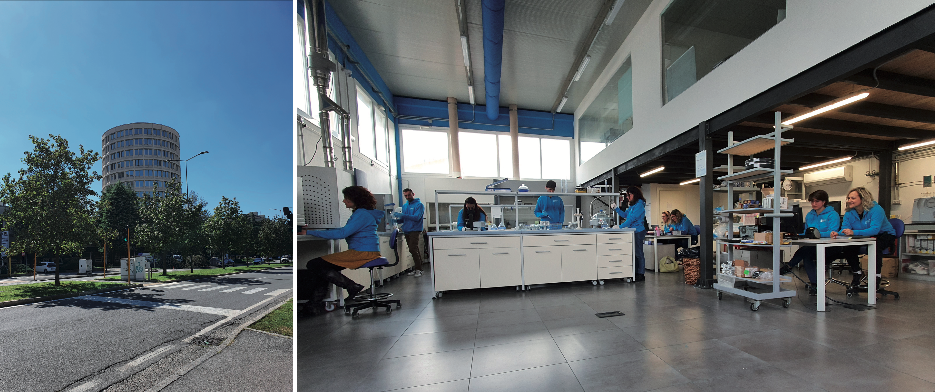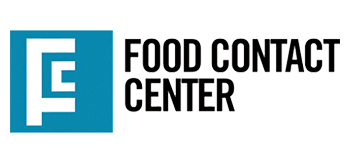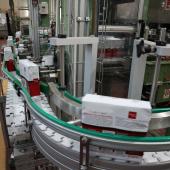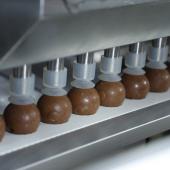FCMs: work in progress
Current status and perspectives in the legislation on FCMs, food contact articles and materials. Updates of the regulatory framework, evaluations of the legislation and operational responses from the online conference organized by Istituto Italiano Imballaggio.
A cura di Marinella Vitulli

Despite the unprecedented web version of the historic annual meeting on FCMs organized on December 15, 2020 by the Istituto Italiano Imballaggio, with the usual participation of the working group of Dr. Maria Rosaria Milana of the Istituto Superiore di Sanità, the event was followed by many participants and resulted, as always, in being interesting and engaging.
As in previous editions, the formula has been proposed again, which provided, after the exposure of laws and regulatory news that took place during the morning, the afternoon session of question time with direct interventions from the web audience, with the aim of providing practical and “live” answers to the many industry professionals connected to the platform.
The talks focused on the current situation regarding the European and national regulatory framework; reports were then given on the follow-up of ongoing activities, such as the evaluation of the legislation on FCMs and the European monitoring, and possible future prospects were illustrated.
The state of things
As usual, the day opened with the presentation of Dr. Maria Rosaria Milana who, regarding the current situation, recalled the key principles contained in the framework regulations Reg CE 1935:2004 and Reg CE 2023:2003, recalling that FCMs are part of the food legislation, represented by Regulation 178/2002/EC (under revision) and then under the general provisions of the Official Control of Foodstuffs, described in Regulation 882/2004/EC, revised by Regulation 625/2017/EC.
The growing importance of intra-food chain communication was also reiterated, as well as the difficulty in applying the principle of Mutual Recognition, since priorities on consumer health prevail over any other criteria. The purpose of European legislation is in fact, first of all, the protection of health, and then the proper functioning of the internal market of the European Union.
It has been clarified that the European Commission is evaluating the situation on the European market, in order to verify whether the system is fit for its intended purpose (consumer safety and functioning of the internal market).
Ongoing activities should be considered as a whole, since they are various and diverse: public consultations, impact assessments, European monitoring of materials on the market.
Is the Framework Regulation adequate?
One of the most important ongoing activities is the evaluation of the adequacy of Regulation (EC) 1935/2004. The main observations are related to the lack of specific rules for materials other than plastics, the lack of focus on specific substances, difficulties related to the not always adequate capacity to demonstrate compliance, consistency with other legislation and the need to consider REACH developments.
Although a roadmap was hypothesized, it is not yet clear when a draft will be published for a new legislature.
EU Recommendation 794/2019 was then discussed, which aimed to assess the prevalence of substances present in and migrating from FCMs.
Approximately 1,600 samples were analyzed among all EU countries, during the period between June and December 2019, and the results are being evaluated.
Non-compliances included primary aromatic amines, phenols (also bisphenols), fluorinated compounds, metals, global migration, formaldehyde and melamine.
In the future, the European Commission’s plan should cover plasticizers, fluorinated compounds, and styrene.

Prospects
During the conference, potential elements of the future strategy on FCMs were outlined, which could be based on:
- further harmonization;
- efficient ways to assess a large number of substances, which will have to foresee the priority of some categories of substances;
- assessment of actual exposure;
- better use of data collected under REACH;
- greater transparency and accountability of companies, perhaps also through digital registrations and dossiers.
It is important to reflect on the fact that the European Commission will revise the legislation on FCMs not only to improve food safety and public health by reducing the use of hazardous substances, but also by promoting the use of innovative and sustainable packaging that uses ecofriendly, reusable and recyclable materials, thus helping to reduce waste.
The Circular Economy has an important impact on packaging, an area where the goals of reducing overpackaging and packaging waste are directing design criteria towards reuse and recyclability.
By reducing the complexity of packaging materials, including the number of materials and polymers used, the use of biodegradable and compostable materials is encouraged, while single-use plastics are penalized, as stated in the so-called SUP - single use plastics - Directive.
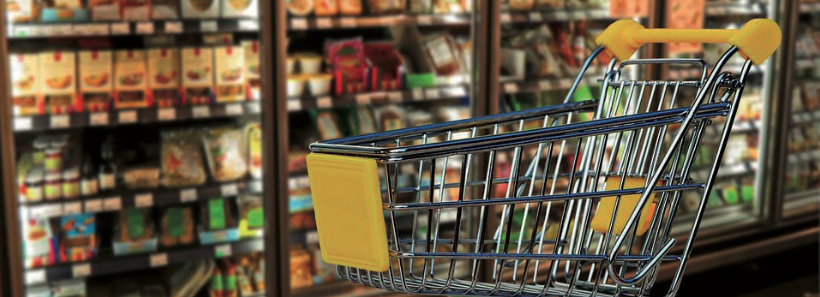
The work in the EU
Dr. Roberta Feliciani then illustrated the activities related to the evolution of specific EU works, such as the 15th and 16th amendment of Regulation (EU) 10/2011, the note on bamboo, the Regulation on ceramics and the amendment of Regulation (EU) 282/2008 on recycled plastics.
Plastics Regulation: fundamental are the innovations introduced for repeated-use items
- According to the new rules, in fact, it is necessary to verify the migration trend in all three tests. That is, it must be checked whether migration tends to increase from the first test to the second test, and from the second test to the third. If the trend of results is increasing, the conformity of the material during its lifecycle cannot be established. This is also the case if the overall and specific migration limits are not exceeded in any of the three tests, but the analytical finding has an increasing trend.
According to the legislator, this situation would not enable compliance to be declared, as it does not enable the adequate prediction of the final migration level during the whole lifecycle of the FCM.
Migration will therefore have to be strictly decreasing in the three consecutive tests. - Important changes have been introduced in the testing conditions of machines and small appliances consisting of several plastic parts or containing plastic parts and other materials; specific migration tests must be carried out with the processed food or food simulant, using the entire machinery or equipment (or its modules or components) under worst case conditions foreseeable in accordance with the operating instructions, without having to establish the migration from each plastic part or material used in the equipment or machinery.
- New features also for the world of coffee: migration from parts used for storage (e.g. tanks, containers, capsules or pods), which are part of the equipment during food processing, is determined under conditions representative for the use of those parts, unless the test conditions applied to the entire equipment or machinery under testing are equally representative for the use of those parts.
Thus, it has finally been clarified that, for coffee capsules and pods, actual conditions can be evaluated to determine temperature and duration of tests. - Other novelties illustrated in relation to the plastics regulation concern the declarations of compliance which, among other things, sees the introduction of a reference to substances whose genotoxicity - resulting from an intentional use during a manufacturing step of such intermediate material - has not been excluded, and which could potentially be present in such quantities as to give rise to a foreseeable migration from the finished material of more than 0.00015 mg/kg of product or food simulant... This is a new and important challenge for analytical chemistry.
- Future innovations in the plastics regulation will concern biocides, in particular substances that, if already authorized in the Biocides Regulation for Food Contact, will be authorized as additives for plastics with a specific migration limit to be established.
Notes on bamboo and ceramics
- Important clarifications have been reported for bamboo, explaining the note of the European Commission concerning materials in which bamboo fibers are mixed with polymeric components; for these materials and articles Regulation (EU) no. 10/2011; the use of bamboo or other similar constituents as additives in the manufacture of plastic materials and articles, for example to fill or reinforce plastics, requires an authorization (Articles 9 11 of Regulation (EC) 1935/2004), which must be granted before placement on the market; to date, no authorization has been requested or granted explicitly for bamboo; it is stated that the authorization was granted for the FCM substance No. 96 “wood dust and fibers, untreated”, not for bamboo, that comes from the grass family.
- Also discussed was the progress of work related to the enactment of the Community Regulation on Ceramics. The draft Regulations envisage a significant lowering of migration limits for Cadmium and Lead (around 60 times for Cadmium and 400 times for Lead). An impact assessment is underway to be published prior to the lowering of the new limits to understand how to mitigate the impact on artisan and traditional producers, limit the burden on other producers, and protect consumers. Work on the impact assessment with respect to artisanal and traditional processes is moving forward, with the document expected to be finalized next year.
Other Regulations Under Consideration
- The following presentations dealt in detail with Regulation (EU) n. 10/2011, on which Massimo Denaro illustrated all the details, including the introduction of a limit of 0.002 mg/kg food for the single primary aromatic amines, and the introduction of new metallic elements to be evaluated.
- Subsequently new features on the amendment of Regulation (EU) 282/2008 on recycled plastics was illustrated, as well as the national situation on the legislation of paper and board, metals and alloys and other FCM materials.
The response to companies
During the online meeting on December 15, a question time session was held in the afternoon, with written questions that the participants in the conference had sent in advance and the answers from the team of the Istituto Superiore di Sanità, followed by comments on operational aspects.
Also this year the debate was of great interest, mainly focused on the novelties introduced by the amendment of EU Reg 10/2011 and on other application aspects of the FCM legislation.
The large audience of economic operators, this year remotely connected to the online event but no less involved than in past editions, could once again appreciate the contributions and the readiness of Dr. Maria Rosaria Milana’s working group of the Istituto Superiore di Sanità to discuss the complex issues related to Food Contact Material legislation.
